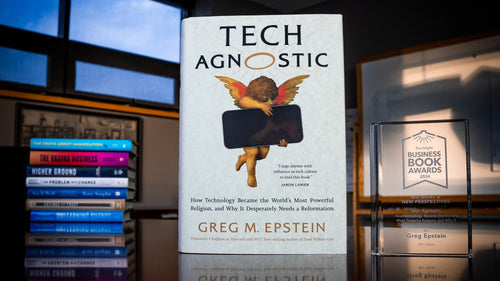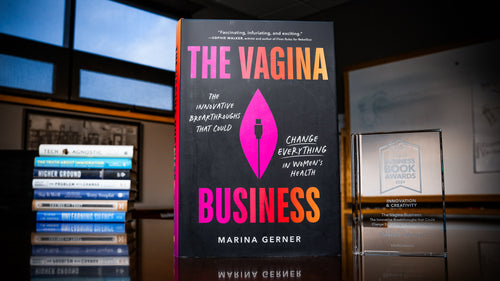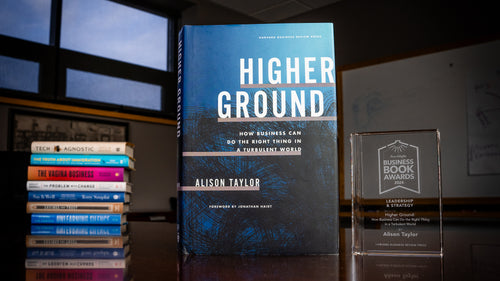Clearer, Closer, Better: How Successful People See the World
When it comes to setting and meeting goals, we are often susceptible to perceptual illusions: We think we are closer or further away depending on our mindset, and we might handicap ourselves by looking only at the big picture or too long at the fine detail. But as award-winning social psychologist Emily Balcetis explains in Clearer, Closer, Better, there is great power in these misperceptions—if we know how to use them to our advantage.
Drawing on her own unique research and cutting-edge discoveries in vision science, cognitive research, and motivational psychology, Balcetis gives readers an unprecedented account of the perceptual habits, routines, and practices that successful people use to set and meet their ambitions.
A mind-blowing and original tour of perception, Clearer, Closer, Better will help you see the possibilities in what you can’t see now. Inspiring, motivating, and always entertaining, it demonstrates that if we take advantage of our visual experiences, they can lead us to live happier, healthier, and more productive lives every day.
In the excerpt below, from the book's Introduction, we come to understand that we may not see the world the way it actually is, and how we can use that to our advantage.
◊◊◊◊◊
We think we see the world the way it actually is. We think that when we look at ourselves in the mirror, we see our face the same way others do. We believe that when we peer down the street in front of us, we know what we’ll pass by on our journey. We are certain that when we scan the food on our plate, we see what it is we’ll be eating. But none of this is always true. Instead, our visual experiences are often misrepresentations. We form an imperfect impression and our eager mind fills in the gaps, putting in place the missing pieces. […] And, interestingly, this can happen without our awareness, both in everyday circumstances and when we’re making some of the most important decisions of our lives.
Based on the research I and my colleagues have conducted, I believe that we can take advantage of the fact that we do not see the world perfectly, accurately, or completely—as long as we know when and why it happens. By learning more about how our eyes work in conjunction with our brain, we can direct our perceptual experiences to help us see the world in ways that will help us overcome some of the biggest challenges we face when working toward our most important goals.
I’m a social psychologist and scientist at New York University, and I have been conducting research on perception and motivation for more than fifteen years. I’ve worked with some of the most accomplished scholars and amassed my own talented team. Together, we have conducted investigations, analyzed the data from experiments we’ve designed, and reviewed new reports emerging from labs all around the world on how people best pursue their goals, and what stands in their way.
Through this work, I have noted commonalities among the problems that people face when they set out on a personal quest to master some ambition. I have encountered these problems too. Just as having a medical degree doesn’t protect a doctor from getting the sniffles, having a PhD in motivation science doesn’t inoculate me from the challenges of meeting my own goals. But I happen to be uniquely positioned to know the scientific data on the problems that arise along the way, and what the solutions to these problems might be. As a result, I have discovered strategies that work to overcome the difficulties that challenge the likelihood of our own success. I’ve learned what works—and what doesn’t—for myself and thousands of others who have been involved in my research.
What’s interesting is that our discoveries align with the methods used by successful entrepreneurs, athletes, artists, and celebrities. Ample scientific data underscores the effectiveness of approaches that these incredible individuals take to surmounting some of their biggest obstacles. And their habits, routines, and practices, my research finds, can be distilled into four general strategies with far-reaching application.
In [my new book, Clearer, Closer, Better: How Successful People See the World], I explain how knowing when to narrow our focus of attention helps us to exercise more effectively, save more for retirement sooner, and find more time in our day to do what we really want to. Understanding how to materialize a goal, our steps, or our efforts improves the way we track our progress. Becoming aware of the power of framing can improve our ability to read others’ emotions, negotiate better deals, improve the relationships we have with other people, and overcome a fear of public speaking. And a wide bracket reduces the allure of temptations, the appeal of multitasking, and the inclination to push on when changing course might be best.
We can think of these strategies as four different tools in a toolbox we select from when working on a self-improvement project. Consider them your hammer, screwdriver, wrench, and pliers—pretty basic implements, but useful for almost every job. Sometimes the goals we set require us to use multiple strategies, just as any home repair may require more than one tool. Sometimes what we’ve set our sights on can be accomplished with one plan but not another, so having options for how to get the job done can be beneficial—just as a fully stocked toolbox offers us the possibility of trading in a screwdriver for a wrench when the first choice isn’t right.
Interestingly, these four strategies share one feature: they are all about harnessing the power of our eyes. Challenging ourselves to quite literally look differently can help us better our odds of succeeding at things that don’t seem related to vision at all. I recently set my sights on learning to play one particular song on the drums. (I had my own reasons for wanting to do this, which I’ll get to shortly.) I found that using the strategies I study in my professional life helped me persevere despite the difficulties I knew I’d experience in learning to lay down a beat—as well as those I hadn’t even anticipated.
In telling you about my own use of these concepts, I hope that you, too, will be able to look at the world—and what you hope to accomplish in it—in new, creative, and better ways. By investigating the what, why, when, and how of these strategies, I have learned that we can teach ourselves to truly see life from a different perspective. We can take control of our own perception. We can direct our eyes to see in ways that promote good fortune, and to avoid seeing in ways that don’t. If we take advantage of our visual experiences, we might see our way to happier, healthier, and more productive lives every day.
Indeed, it is my hope that when you’ve finished reading [the] book, you’ll be able to envision new paths forward and different perspectives. It’s not only about winning gold medals and making more money, though I’ll cover those things too. With more insight into your perceptual experience, you’ll obtain a better understanding of your life’s objectives, how far you’ve come, how far you have to go, and how you can get there more quickly. You’ll also have a better handle on why other people may earnestly believe they’ve seen something you don’t see, and you’ll understand how that impacts the ways in which you pursue success. Once you understand when and how vision is biased, you can learn to use those biases in your favor, and to counteract them when necessary.
There is no one right way to see the world […] Instead, the work I share with you aspires to offer suggestions for improving how you confront challenges by building up the cache of resources at your disposal. I’ll give you a set of powerful and largely untapped perceptual tactics you can use to create and sustain views of yourself, others, and your environments that will help you see the possibilities in what you can’t see now. To do this, I’ll draw from research that sits at the intersection of social psychology and visual perception. My work, and that of others I draw from, taps into the neurobiological nature of the human visual system, which is itself a kind of interdepartmental collaboration between the eyes and the brain. When we understand the scientific basis for how we perceive the world around us, the path to most goals becomes clearer, success looks closer, and the process feels better.
Excerpted from Clearer, Closer, Better: How Successful People See the World by Emily Balcetis.
Published by Ballantine Books, an imprint of Random House.
Copyright © 2020 Emily Balcetis.
All rights reserved.
ABOUT THE AUTHOR
Emily Balcetis, PhD, is an associate professor of psychology at New York University. She is the author of more than fifty scientific publications, and her research has been covered by Forbes, Newsweek, Time, Cosmopolitan, Scientific American, and The Atlantic. Her TED talk has more than 3.6 million views. Her work has been recognized by the Federation of Associations of Behavioral & Brain Scientists, the International Society for Self and Identity, and the Society for Experimental Social Psychology, among others. She lives in New York City with her husband and son.




